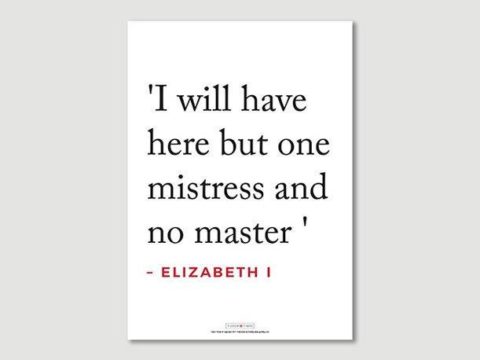Mary, Queen of Scots: Life Story
Chapter 11 : Quarrels
Most of Mary’s modern biographers – Fraser, Guy and Porter, for example - believe that for the first four years of her personal reign, Mary enjoyed considerable success. Wormald, however, contends that Mary failed in her duties as a monarch, by becoming involved in factional politics.
It is Wormald’s argument that the picture generally painted by non-Scots historians of a factious nobility who paid little attention to their monarch, is disproved by the stable transfer of power from minors to adult monarchs in the previous hundred years, all of whom managed to stamp out the worst excesses of feuding over-mighty subjects. Mary, she believes, failed to rise above faction, and became involved in it.
The first test of her authority was the quarrel between the former regent, James Hamilton, Duke of Chatelherault’s son, the Earl of Arran, and James Hepburn, 4th Earl of Bothwell. Bothwell, Mary’s half-brother, Lord John Stewart, and one of her Guise uncles, Renée, Duke of Elboeuf had provoked a brawl by attempting to force entry to the house of Arran’s mistress, a merchant’s daughter of Edinburgh. The resulting disturbance was reported to the queen by the city authorities.
Mary always took a strong line against immorality – as a widowed queen, she needed to be careful of her reputation. She reprimanded the offenders, who paid no attention to her words, and they gathered men to make another attempt on the merchant’s house. Lord James, and the earls of Argyll and Huntly managed to defuse the situation – but it was not a good start for Mary’s authority.
Unable to reconcile Bothwell and Arran (who had conceived an unrequited love for the queen), Mary dismissed the former from the court. The two were apparently reconciled by Knox, but a more serious quarrel broke out when Arran claimed that he and Bothwell had cooked up a scheme for abducting Mary, marrying her forcibly to Bothwell, and dividing the realm between themselves (Lord James and Maitland were to be assassinated).
Arran gave details of this supposed plot to Mary and Lord James. Châtelherault concluded that his son, who had long exhibited signs of instability, needed to be confined. Arran’s second letter on the subject to Mary was countered by another from his family, saying that he was out of his wits, and the queen should not believe a word of it.
Mary and Lord James took no chances – both Arran and Bothwell were arrested. Arran escaped, but was re-captured, having fallen into a complete mental collapse, still proclaiming his love for the queen. They were brought before the Privy Council, Arran persisted in his claims, and Bothwell’s demand for resolution by single combat was rejected. Both men were kept incarcerated, and Arran’s father forced to cede his stronghold of Dumbarton Castle.
Rightly or wrongly, Mary depended very heavily on Lord James and his colleague, Maitland. They were the chief members of her Privy Council, a body which had the same legislative power as Parliament. In theory, a minimum of six Privy Councillors were to attend the queen, and transact business, but Lord James and Maitland soon had significant control over the rest.
Whilst her Councillors were transacting much of the day to day business, Mary was re-establishing the court life that her father and grandfather had enjoyed – hunting, hawking and archery were regular pastimes, as was dancing, something at which Mary excelled.
It crept into John Knox’s ears that Mary had been dancing past midnight, and the preacher was outraged at the bad example she was setting – he attributed her high spirits to the news of renewed persecution of Huguenots in France – although his basis for this assertion is anybody’s guess. Outraged by Mary’s levity, Knox denounced her and the court from the pulpit, in response to which, Mary called him to Holyrood.
Knox ratcheted back somewhat from wholesale rejection of dancing, provided the dancer did not neglect any duties to God. Mary, in a placatory spirit, told him she would always be pleased to hear of any faults in her behaviour that she might amend. Rather than seeing this as an extraordinarily gracious response from a sovereign (hard to imagine Henry VIII, Elizabeth or James V being so conciliatory) Knox responded that it was not his job to deal with sinners independently, but that Mary could attend his sermons.
Despite Knox’s criticisms, Mary continued to conduct her court in a regal fashion, and celebrated the marriages of her half-brother Lord John Stewart to Bothwell’s sister; her half-sister, Lady Jean Stewart, to the Earl of Argyll, and of Lord James to Agnes Keith.
Other pastimes she enjoyed included hunting, hawking, archery, tennis and possibly billiards, as well as voracious reading in all of the languages in which she was fluent, but particularly French.
Mary, Queen of Scots
Family Tree
